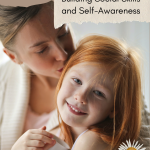Breaking Chains of Conformity: Embracing Identity Amidst Cultural Pressures
In a world where societal expectations often serve as a compass for personal worth and cultural norms define the parameters of acceptance, the concept of identity can feel both empowering and confining. At its core, identity is a complex amalgamation of our beliefs, experiences, and affiliations – an intricate mosaic that forms the essence of who we are. Yet, beneath the surface of this intricate tapestry, lies a shared human experience: the struggle with identity insecurities.
Identity insecurities, in their various forms, arise when individuals grapple with doubts about their self-worth, belonging, and adequacy. These doubts can manifest in countless ways, from feeling pressure to adhere to predetermined gender roles, to battling stereotypes associated with one’s ethnicity or cultural background. They can even emerge from the clash between personal aspirations and traditional expectations, leading to a sense of internal dissonance.

Cultural and societal expectations, like invisible hands, shape the lens through which we perceive ourselves and others. From a young age, we are exposed to a multitude of influences that subtly mold our understanding of what it means to be “normal” or “acceptable” within the context of our culture and society. These influences, while sometimes constructive, can also sow the seeds of self-doubt, reinforcing the notion that deviating from established norms could result in rejection or isolation.
In this exploration, we will embark on a journey to dissect the intricate interplay between identity insecurities and the formidable forces of cultural and societal expectations.
Cultural and Societal Expectations: A Closer Look
Cultural and societal expectations, much like invisible currents, exert a profound influence on how we perceive ourselves and shape our sense of identity. These expectations can be as subtle as a whispered suggestion or as overt as a billboard message, weaving themselves into the very fabric of our self-concept. Let’s explore some examples of these expectations and delve into how they exhibit remarkable diversity across various cultures, communities, and social backgrounds.
Gender Roles and Norms:
- In many cultures, traditional gender roles prescribe distinct behaviors, interests, and career paths for individuals based on their assigned gender. For instance, expectations about men being assertive and women being nurturing can lead to internal conflicts when one’s identity defies these norms.
- These expectations can range from the overt – like restrictions on clothing choices – to the subtle, such as the notion that certain emotional expressions are more “appropriate” for one gender than another.
Educational and Career Pursuits:
- Societal norms often dictate which educational and career paths are deemed prestigious or suitable for different genders. This can lead to internal struggles for individuals who aspire to fields considered atypical for their gender.
- Cultural variations can further influence career choices; certain cultures might prioritize professions seen as stable and practical, while others emphasize creative or artistic pursuits.
Body Image and Beauty Standards:
- Societal beauty standards vary significantly across cultures, shaping perceptions of physical attractiveness. These standards can lead to body image insecurities when individuals feel their appearance doesn’t align with the prevailing ideals.
- Different cultural preferences for skin tone, body shape, and features can exert powerful influences on how people perceive their own bodies.
Family and Relationship Expectations:
- Cultural norms surrounding marriage, family structures, and relationships can impact individuals’ decisions and self-perceptions. Pressures to conform to traditional family roles may clash with personal aspirations.
- Interactions and expectations around dating, marriage, and even friendships can differ greatly across cultures, influencing how individuals form and maintain connections.
Academic Achievement and Success:
- Certain cultures place a strong emphasis on academic achievement and success as markers of personal worth. The pressure to excel academically can lead to insecurities if one’s achievements don’t align with these high expectations.
- On the contrary, some cultures might prioritize other forms of achievement, such as artistic or athletic prowess, leading to different sources of identity pressure.
As we traverse the vast landscape of cultural and societal expectations, it becomes evident that these influences are far from uniform. They are woven from threads of history, tradition, geography, and prevailing values, creating intricate patterns that differ not only from culture to culture but also within various communities and social strata. By acknowledging these diverse expectations, we gain a richer understanding of the complex tapestry that shapes our identities and the unique challenges individuals face as they navigate their sense of self amidst these currents.
How to overcome identity insecurities….. Tips & Tricks
Overcoming identity insecurities stemming from cultural and societal expectations is a journey that requires self-awareness, resilience, and proactive steps. Let’s explore some effective strategies along with illustrative examples to better understand how these approaches can minimize the impact of such insecurities:
- Self-Reflection and Awareness: Begin by recognizing the external influences that have contributed to your insecurities. Reflect on the values and expectations you’ve internalized, and consider whether they align with your authentic self. For example, if you feel pressured to pursue a certain career path due to societal norms, take time to assess whether this choice truly resonates with your passions and skills.
- Challenge Negative Thoughts: Question and challenge negative thoughts that fuel your insecurities. Cognitive restructuring involves replacing distorted beliefs with more rational and balanced perspectives. For instance, if you believe that your worth is solely defined by conforming to cultural norms, challenge this by reminding yourself of your unique qualities and accomplishments.
- Cultivate Self-Compassion: Treat yourself with the same kindness and empathy you would offer a friend. Acknowledge that everyone faces societal pressures, and it’s okay to struggle. For instance, if you’re grappling with body image insecurities due to cultural beauty standards, practice self-compassion by reminding yourself that your worth isn’t determined solely by appearance.
- Seek Support: Share your feelings with trusted friends, family members, or a therapist who can provide validation, guidance, and a fresh perspective. Talking about your insecurities can help you realize that you’re not alone. For instance, if you’re feeling conflicted about your cultural identity, connecting with others who have similar experiences can provide a sense of belonging and understanding.
- Set Personal Boundaries: Establish boundaries that protect your well-being and values. Learn to say no to situations or people that undermine your self-esteem. For example, if you’re consistently exposed to toxic beauty standards on social media, consider unfollowing accounts that contribute to these negative feelings.
- Focus on Personal Growth: Channel your energy into personal growth and accomplishments that align with your true aspirations. By setting and achieving goals that resonate with your values, you’ll build a sense of competence and confidence independent of external expectations. If you’re torn between traditional expectations and pursuing your passions, actively working towards your goals can demonstrate your commitment to your own path.
- Embrace Cultural Diversity: Celebrate the diversity of cultures and backgrounds. Engage in activities that connect you to your cultural heritage, fostering a sense of pride and belonging. For instance, if you’re struggling with cultural identity insecurities, participating in cultural events or learning about your heritage’s history can help you feel more connected.
- Practice Mindfulness: Engage in mindfulness techniques, such as meditation or deep breathing, to stay present and reduce anxiety. Mindfulness can help you observe your thoughts and emotions without judgment, allowing you to respond to them in a more balanced way. If you’re experiencing anxiety related to meeting cultural expectations, mindfulness can provide a sense of calm and perspective.
Remember, overcoming identity insecurities is a gradual process. It’s about acknowledging that you have the power to define your identity on your terms, even in the face of external pressures. By incorporating these strategies into your journey, you can gradually minimize the impact of cultural and societal expectations on your self-esteem and lead a more authentic, fulfilling life.

A powerful note to my readers:
In the tapestry of our lives, woven with the threads of culture, society, and personal history, there are moments when we may feel trapped, ensnared by the expectations of others. We may doubt ourselves, our choices, our very essence. But in the depths of these doubts, there exists an ember of strength, an unwavering resilience that can blaze into a powerful fire of self-belief.
Embracing your identity, unburdened by the weight of external expectations, is not an easy path. It’s a journey through rugged terrain, fraught with doubts and obstacles. Yet, it’s a journey that can lead to the most profound and liberating destination: the discovery of your true self. You are not defined by the cultural norms, societal pressures, or the expectations of others. You are defined by your dreams, your passions, your values, and the unique constellation of experiences that make you who you are. Each step you take in the pursuit of your authentic self is a step toward freedom.
Think of the countless individuals who, against the backdrop of formidable expectations, have shattered the shackles of conformity to illuminate their own path. They believed in themselves when the world hesitated to do so. They found strength in vulnerability, power in embracing their differences, and resilience in their authenticity.
Take Maya Angelou, who transcended the boundaries of racism and sexism to become a celebrated poet and author. Or Malala Yousafzai, who defied the oppressive forces of ignorance to champion education for girls worldwide. Their stories resonate because they dared to believe in themselves, to trust their inner voices when the world tried to silence them.
So, dear reader, as you navigate the intricate web of cultural and societal expectations, remember this: You possess the strength to break free from the insecurities that hold you back. You have the power to define your identity, to shape your destiny, and to embrace your authenticity.
Believe in yourself, even when others may not. Have the courage to stand tall amidst the pressures that seek to diminish your worth. Your identity is a masterpiece in the making, a canvas upon which you can paint your unique story. As you move forward, let your heart be your guide, and let your authenticity be your strength. Trust that the world will be enriched by the beauty of your true self, unburdened by the weight of others’ expectations.
The journey may be challenging, but remember, within you lies an unbreakable spirit—a spirit that, when unleashed, can transform not only your life but also the world around you. Embrace it, nurture it, and let it soar. Break free from the insecurities that bind you, and in doing so, you will discover the boundless power of your own authenticity.








